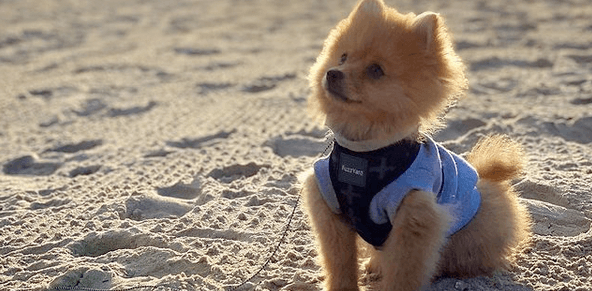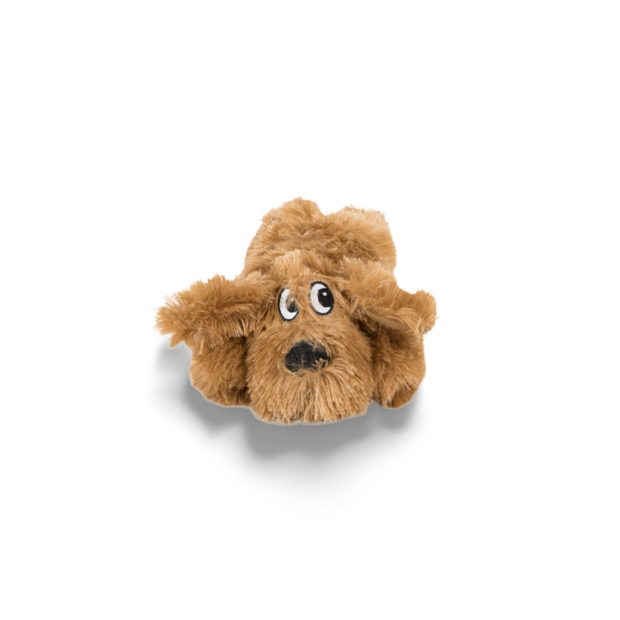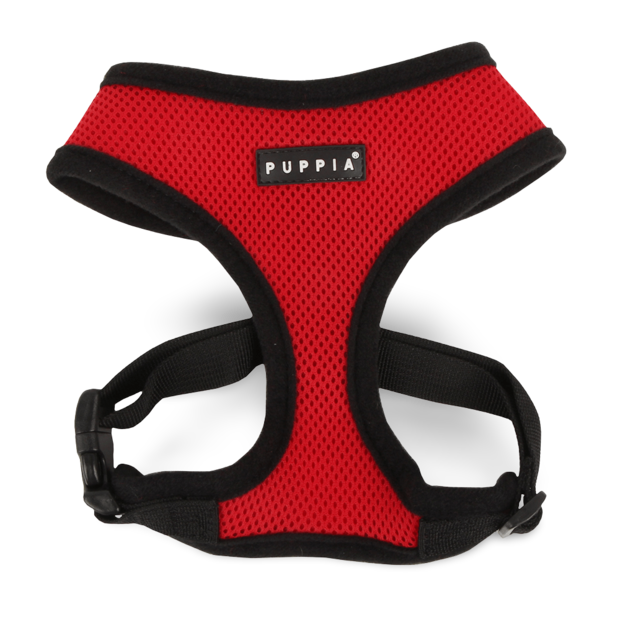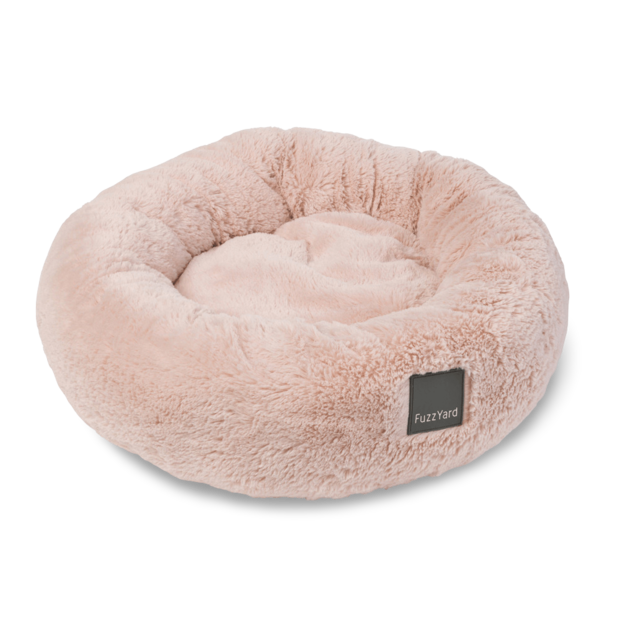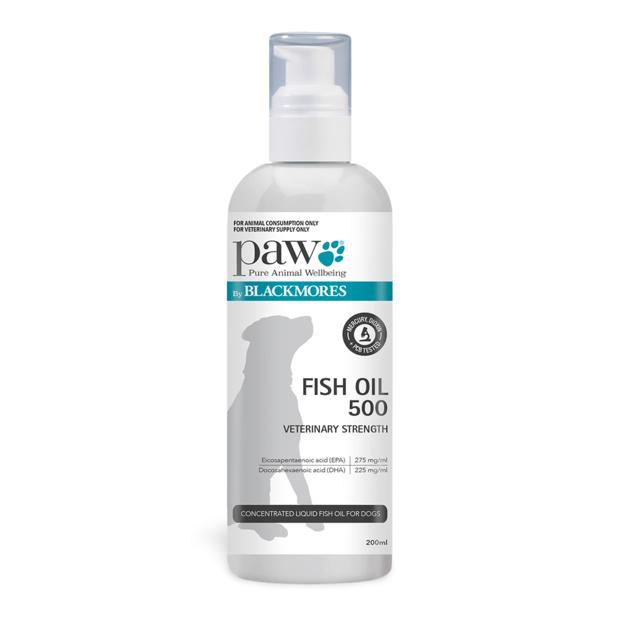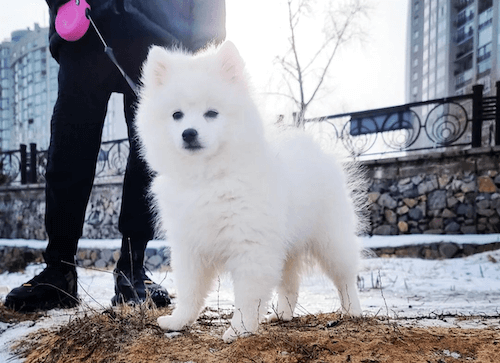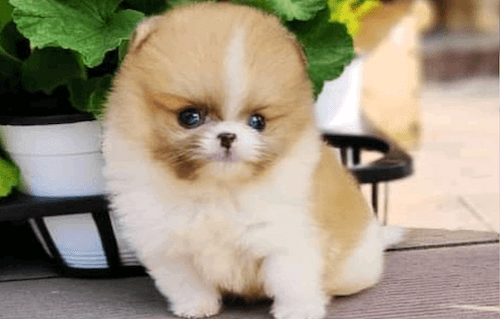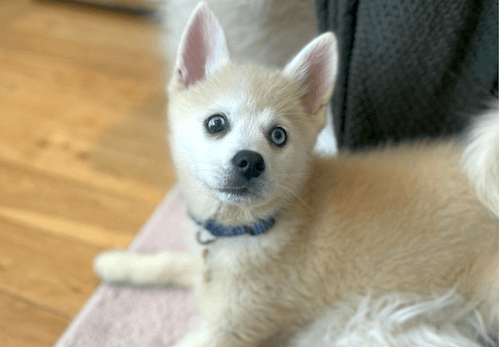Pomeranian
A Complete Breed Guide for Pomeranian Dogs
This article is written by Pet Circle's qualified veterinarian,
Sparkling with personality and energy, these dainty little dogs are the hardiest of all the toy breeds. Pomeranians are considered to be a miniature German Spitz. They are very intelligent and make excellent watch dogs - they are always on the alert when a stranger comes to knock on the door!
Pomeranians are easily distinguished by their luscious double coat and the extra fluff of hair surrounding their neck and chest. They are known for their foxy faces and pricked ears. Their bodies are square with a feathery tail that curls up over their backs.
Fun Fact! Did you know a pair of Pomeranians is called a 'puff' and a group of 3 or more is called a 'tuft'?
Contents:
Pomeranian Facts
History
Personality
Nutrition
Common health problems
Grooming
Related Breeds
Further reading
Top toy and lifestyle recommendations for Pomeranians
Soft toys are perfect for Pom's play and nap times
A well-fitted harness provides extra security and comfort during walks
A luxurious bed that keeps your pup snuggled on the sides
Pomeranian Facts
|
Breed size: |
Place of origin: |
Other names: |
|
Toy |
Germany |
Deutscher Spitz, Zwergspitz, Dwarf Spitz |
|
Breed group: |
Energy level: |
Weight range: |
|
Toy Group, Companion Dog |
High |
1 - 3 kg |
|
Life expectancy: |
Tendency to bark: |
Height range: |
|
12 - 16 years |
High |
18 - 30 cm |
|
Drool factor: |
Social needs: |
Coat length: |
|
Low |
High - love getting attention |
Medium, double coat |
|
Shedding factor: |
Overall grooming needs: |
Colours: |
|
Moderate |
High |
Cream, orange sable, wolf sable, brown, chocolate, |
How big do Pomeranians grow?Pomeranians are a pint-sized toy breed, and tend to grow to be only 15-18cm tall (shoulder height) with a standing height of 20-24cm. The average adult weight is 1.4-3.2kg. When meeting your an adult Pomeranian, many are often surprised to hear they are fully grown as they tend to look like puppies for life! |
How much does a Pomeranian cost?Pomeranian puppies vary in price depending on the breeder. However, most Pomeranian puppies cost from $600-1500. Of course, as with any breed, it is cheaper to adopt an adult dog from a rescue. |
Do Pomeranians shed much?Pomeranians do shed. While not considered 'heavy shedders', the amount of hair is still fairly significant. They shed all year round, and have a thick double coat, which consists of a short undercoat and longer topcoat. Thatâs because they are possibly one of the hairiest of the small dog breeds. Shedding fur is generally easily controlled with regular brushing (twice a week is sufficient) with a deshedding comb or a grooming glove. |
Are Pomeranians good pets?Pomeranians make wonderful pets! They are vivacious, loveable, spritely and affectionate. They are also energetic, playful, and great companions. They are gentle with children but are not the ideal pet for young children due to their tiny size, which leaves them at risk of being dropped or stepped on. As with any dog, it is recommended that your child is always supervised when interacting with your Pomeranian to keep both the child and dog safe. |
Do Pomeranians bark much?Pomeranians are quite prone to yappiness, and have a loud high pitched bark. This makes them excellent watchdogs, however it can bother your neighbours a little if left unchecked! To reduce your Pomeranian's barking, ensure you train with positive reinforcement from a young age and reduce problem behaviours before they begin! |
How long do Pomeranians live?The Pomeranian is a toy breed and therefore can live longer than many other dogs. The average lifespan is 12-16 years on average. As with any breed, they will live much longer if you take good care of them, never let them become overweight, and keep their teeth in top condition! |
How much training do Pomeranians need?Pomeranians are quite clever and can be taught tricks easily. With regards to house training, a Pomeranian puppy requires a few weeks of training in order to be fully house and toilet trained. On average, it will typically take 2 to 4 months for a Pomeranian puppy to become fully house ready. Consistency is key - as a toy breed they can try to take liberties and will learn best if you hold your ground and resist those puppy dog eyes! |
How do I choose a Pomeranian breeder?When looking for a Pomeranian, your options are to: a) adopt from a rescue (this is our top recommendation!) b) buy from an or online marketplace or pet store (NOT recommended!), or c) Research a reputable breeder. Never purchase a puppy without inspecting the breeder's premises and asking the 10 Breeder Checklist Questions first. Good breeders socialise their animals, house them humanely, allow you to inspect their premises, and select for healthy traits and good temperaments. Read our Guide to Finding a Good Breeder for more tips. |
Pomeranian History
Pomeranians originated in the province of Pomerania, which is now split between Germany and Poland, a region of Northern Europe on the coast of the Baltic Sea. They are descended from the larger German Spitz, which can weigh up to 30kg, a good ten times heavier than the toy Pom! In the 18th century, the Queen of England fell in love with the breed and kept a particularly small sized Spitz. Over time, the size of the dogs was bred down to the miniature toy that we now know as the Pomeranian. Not only were English royals fascinated by this breed, many famous people including Sir Isaac Newton, Martin Luther, Michelangelo and Mozart all had a little Pom companion.
Pomeranian Personality

The Pomeranian is a friendly, active and playful dog. They are also fiercely independent, curious, and quite headstrong which means they can easily develop 'small dog syndrome', thinking that they are the pack leader over their human.
Training is important to prevent serious behavioural problems. You do not want your Pomeranian to develop a habit of excessive barking and with extroverted personalities they easily become very vocal members of the household. They are intelligent dogs but can sometimes be stubborn with training. Diligence with training, being firm and patient, and focusing on positive reinforcement when your powder-puff displays good behaviour should mould your pet into a reasonable member of society.
Donât forget about socialisation when they are young. Pomeranians are natural watchdogs and can be suspicious of strangers. Providing plenty of pleasant experiences with new humans and dogs as a puppy will help reduce anxiety and unwanted aggressive behaviours as an adult dog.
Pomeranians can suffer from anxiety and stress when left alone for long periods of time. Long lasting treats are a great way to combat this and keep your Pomeranian busy while you are away.
Pomeranian Diet and Nutrition

Depending on which life stage your Pomeranian is at, their nutritional requirements can be very different. It's very important that you feed your Pomeranian a suitable diet that is age appropriate and meets all of their needs.
Pomeranian puppies
When adopting a Pomeranian puppy into your home, it's important to have a few things in order:
• Food: Pomeranian puppies should eat a premium, small breed formula such as Hills Science Diet Small Breed Puppy, Advance Small Breed Puppy Food or Savourlife Grain Free Small Breed until they are 12 months of age.
• Behaviour: Pomeranian puppies have fantastic personalities but do like to chew and destroy things, just like any puppy! Puppy proofing your house is essential. Remove any easy-to-reach toxins or electrical cords, and provide plenty of toys!
• Worming: Pomeranian puppies need to be wormed fortnightly from the age of 2-12 weeks, and then once per month after this. In Australia, Pomeranian puppies also require heartworm protection. You may wish to get a heartworm injection yearly at your vet, or you can simply give a monthly treatment such as Nexgard Spectra, Simparica Trio, or Credelio Plus.
Top food recommendations for Pomeranian Puppies
Pomeranian puppies need to eat a premium, small breed diet that is nutritionally formulated to meet AAFCO Guidelines until they are 12 months of age. You may consider a Rotation Diet to provide exposure to different proteins and reduce the risk of food sensitivities.
Raw diets for Pomeranians? Raw diets are not suitable or safe for Pomeranian puppies due to the risk of bacterial contamination, which can lead to food poisoning and upset their sensitive tummies. Plus, an unbalanced diet can lead to nutritional deficiencies. Read more about Raw Diets: The Risks and Benefits.
Top food recommendations for adult Pomeranians
For adult Pomeranians, there are many brands that offer smaller kibble size to suit small and toy breeds and it's important to source a premium quality pet food. Premium small breed diets contain balanced levels of protein, fat and carbohydrate plus vitamins, minerals and antioxidants for health and wellbeing.
To maintain the glossiness of that thick, luscious fur, you may wish to feed your Pomeranian a diet rich in Omega 3 oils, particularly EPA and DHA, which can support skin health and nourish the coat. Fish oils are good for promoting healthy joints, an important benefit for the active and playful pom.
Pomeranian Health Issues
Patella luxation
Frequent dislocation of the kneecap can cause locking of the leg and pain in the joint. Dog owners will often notice their dog skip or run around on three legs, holding up the leg with the problematic patella. Luxation occurs when there is a structural abnormality or when a traumatic injury has affected the joint.
Tracheal collapse
Most commonly occurring in middle aged toy and small breed dogs, collapsing of the windpipe happens because of weakening of the cartilage rings. When the rings cannot maintain its supportive structure, the airway tends to collapse as the dog breathes out. Coughing is a typical symptom and in worse cases, tracheal collapse can affect breathing.
Eye problems
Conditions of the eye which can affect Pomeranians include intraocular pressure (increased pressure in the eye), microphthalmia (small eyes), and colobomas (congenital lack of tissue in an eye structure).
Alopecia X
Commonly referred to as 'black skin disease', this is a combination of alopecia (hair loss) and hyperpigmentation (darkening of skin). The specific cause is unknown and research is ongoing to find out. It is possibly a hereditary condition with males affected more often than females, and typically occurs during puberty.
Pomeranian Grooming

Pomeranians have a thick double coat with a longer topcoat and shorter under layer. They are fluffiest around their neck, head, and 'booty'! Pomeranian grooming needs tend to incorporate shampooing with a conditioning shampoo every 3-4 weeks, brushing every couple of days, trimming their nails, and keeping their eyes and ears clean.
Daily brushing will definitely keep that fluffy hair in top condition and reduce shedding. A high quality slicker brush or deshedding comb can help remove loose fur. Regular bathing with a natural and soothing shampoo will help keep your puffball clean if they often come into the house and snuggle up on your bed. Between baths, a dry shampoo can help keep their coat looking and smelling fresh. Donât forget to trim their nails too!
Dental care is ever so important with Pomeranians, as they are very prone to dental disease. Regular tooth brushing is the gold standard, you might like to try some tasty dental treats too.
Top health and grooming products for Pomeranians
To keep your Pom's luscious coat looking sleek and glossy - and to help reduce that notorious Pomeranian shedding! - we recommend the following products:
Related Breeds
The Pomeranian is classified in the 'Spitz' breed group - this group consists of dogs bred to live in harsh northern climates. The Spitz family is very large and includes sled dogs such as Huskies and Malamutes, herding dogs such as the Samoyed, Finnish Lapphund, Asian breeds such as the Shiba Inu, Japanese Spitz, Chow Chow, Shar Pei, and Akita, and companion dogs such as the Danish Spitz, the Keeshond, and the Pomeranian. In Australia, the most common breeds related to the Pomeranian include...
Japanese Spitz
The Japanese Spitz is generally considered a larger, whiter cousin of the Pomeranian. They are a small, fluffy-coated, white dog which stands at around 33 cm tall and weighs around 5-10kg. They have a distinguishable thick, pure white double coat, a curled tail, and a pointy, fox-like face.
Samoyed
Upping in size again, the Samoyed is a medium-sized Spitz breed which tend to grow to be 16-27kg in weight and 46-56cm in height. They are equally fluffy and sport a thick, white double coat and a curled tail, just like their Pomeranian cousin.
Teacup Pomeranian
The Teacup Pomeranian, also known as 'Miniature Poms' or 'Pocket Pomeranians', are Pomeranians which are bred to be ultra-small. They are not a recognised breed, but rather Pomeranians that have been selected for their small stature by breeders. While they may be cute, there is no doubt that the intense miniaturisation of dog breeds has garnered quite a bit of controversy due to the health issues it creates. Selectively breeding the 'runts' is not considered responsible breeding as it can lead to sickly pups with health problems.
Pomsky
The pomsky dog is a cross between the Siberian husky and the Pomeranian. One of the many designer dog breeds gaining popularity in recent times, pomskies are known for being incredibly photogenic and therefore desirable for social media. Pomskies tend to grow to be 25-38cm tall and 9-14kg in weight, which makes them much larger than a purebred Pomeranian but still small enough to fit on a lap, unlike a husky.
Further Reading
Premium Pet Food: Is it Worth it?
3 Common New Pet Problems to Avoid
Want to know more? Check out our Discover Page for more tips on keeping your pets happy and healthy.























